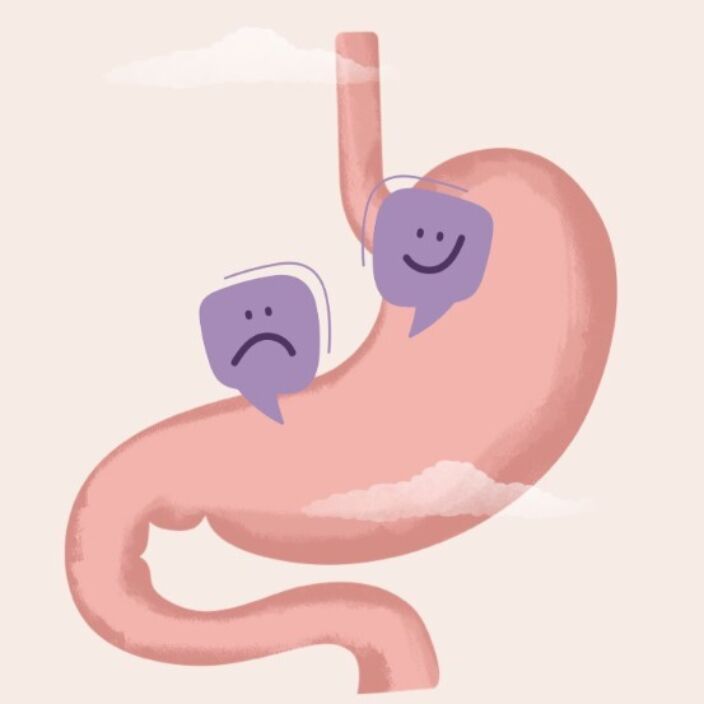Informatie over de behandeling van gastroparese
We weten véél, maar tegelijkertijd ook weer heel weinig over gastroparese. Er wordt weinig tot geen onderzoek naar gedaan. Er zijn wel enkele behandelmethoden, maar niet alles werkt.



Er zijn 2 richtlijnen geschreven over de behandeling van gastroparese bij volwassenen, waarbij de ene vanuit de Verenigde Staten komt en onderbouwd is met onderzoeken. De andere is vanuit Europa, waarbij de adviezen gebaseerd zijn op de meningen van verschillende experts uit Europa. Daarnaast is het van belang om te weten dat deze richtlijnen worden opgezet om behandelaars te helpen een keuze te maken in de behandeling, maar dat hier met een goede reden altijd vanaf geweken kan worden.
Ook staan nieuwe behandelingen, waar nog geen of weinig onderzoek naar is gedaan, niet altijd in een richtlijn beschreven. Onderstaande informatie is gebaseerd op deze richtlijnen en de beschikbare literatuur die er is over de genoemde behandelingen.
Voeding
De eerste stap in de behandeling van gastroparese is de uitleg over een aangepast dieet, bestaand uit kleine deeltjes, zodat deze makkelijker te verteren zijn. Daarnaast moet er gezorgd worden dat de patiënt in een goede voedingstoestand komt of blijft, dit kan met orale (voeding via de mond), enterale (voeding die rechtstreeks in de maag of darm wordt ingebracht) of zo nodig parenterale (voeding die via een infuus rechtstreeks in de bloedbaan komt) voeding. Bij diabetische gastroparese is het van belang dat er een optimale glucose controle is, om de kans op verergering van de klachten in de toekomst te verkleinen.
Gastric rest
Als voeding via de maag onvoldoende verdragen wordt, noemt men dit gedecompenseerde gastroparese, waarbij het huidige advies vanuit het expertise centrum in Maastricht is om ‘gastric rest’ te nemen (3 maanden). Daarbij is het doel de maag volledig tot rust te laten komen en dus volledig via de darm te voeden.
Dit kan via een neus-duodenum sonde, een sonde die via de neus wordt ingebracht in de maag en dan door de pylorus (maag-uitgang) naar de twaalfvingerige darm, wat het eerste deel van de dunne darm is. Hierover krijg je dan continu voeding, met eventueel een stopperiode ertussen als dit kan.
Als het waarschijnlijk is dat de voeding via de dunne darm langdurig nodig is, kan een directe toegang tot de dunne darm worden geïndiceerd. Dit kan via een directe jejunostomie (ingang rechts in de buik op de dunne darm) of middels een gastrostomie (ingang links in de buik op de maag), met een verlenging naar de dunne darm (jejunum-extensie), door de pylorus heen. De Amerikaanse richtlijnen geven een duidelijke voorkeur voor een directe jejunostomie en eventueel een aparte gastrostomie, zodat de uitgang van de maag niet door een slang die erdoorheen ligt geblokkeerd kan worden en de maag ook leeg gemaakt kan worden wanneer nodig. Een ander nadeel van de gastrostomie met jejunum-extensie is het risico op het terugschieten van de dunne darm slang de maag in of het verstoppen van de maaguitgang.
Medicatie
Er zijn verschillende medicaties die voorgeschreven kunnen worden om de motiliteit (beweging) van de maag te verbeteren. Waarbij het van belang is om eerst de medicatie te stoppen die de maaglediging kunnen vertragen (zoals morfine preparaten en tramadol). Hieronder staan de verschillende medicaties die voorgeschreven kunnen worden, met daarbij aangegeven of ze daadwerkelijk effectief zijn in de behandeling van gastroparese of niet:
- Erythromycine
Dit is een soort antibiotica, die in een lage dosering ook de maaglediging kan versnellen. Meestal wordt dit echter tijdelijk gegeven, omdat langer dan 4 weken mogelijk complicaties kan geven - Metoclopramide:
Wordt geadviseerd, maar langdurig gebruik (>12w) kan complicaties veroorzaken, met name bij patiënten ouder dan 65 jaar, diabetes patiënten, patiënten met lever of nierfalen en patiënten die ook antipsychotische medicatie gebruiken - Domperidon:
Wordt in de Amerikaanse richtlijn beschreven als een optie, maar is aldaar niet toegestaan. In de Europese richtlijn wordt deze niet geadviseerd in de behandeling van gastroparese, aangezien dit de maagontlediging niet versneld - Maagzuurremmers:
Worden niet geadviseerd als eerste keuze middel in de behandeling van gastroparese. Dit kan echter wel ondersteunend voorgeschreven worden in het kader van reflux als bijkomend symptoom - Andere prokinetica, zoals Prucalopride (4-HT4 receptor agonist):
Deze zijn nog verder in ontwikkeling en worden met name in studieverband gegeven. Prucalopride (Resolor) wordt in Nederland niet vergoed en moet zelf betaald worden. Het heeft vrij veel bijwerkingen en er kan pas na 4 weken beoordeeld worden of het daadwerkelijk effect heeft. Prucalopride wordt in Nederland met name voor obstipatie of prikkelbare darm syndroom met obstipatie gebruikt - Anti-depressiva (TCA of SSRI) en antipsychotica (Haldol):
Worden niet aangeraden in beiden richtlijnen.
Minimaal invasieve behandelingen
- Botox-injecties in de pylorus:
Dit blijkt niet (langdurig) effectief en wordt daarom niet aangeraden in zowel de Amerikaanse als Europese richtlijn - G-POEM:
Dit is een nieuwe techniek, waarbij de pylorus (maaguitgang kringspier) via de binnenzijde wordt ingesneden en wijder wordt gemaakt. Dit gebeurt via een gastroscopie, een camera die via de mond, keel en slokdarm de maag in gaat. De verbetering in klachten wordt met name gezien op het verminderen van het braken en de echte lange termijn uitkomsten zijn hier nog niet van bekend. Het is hierbij van belang dat de rest van de darmen wel goed werken. Dit is een techniek die in Maastricht UMC wordt uitgevoerd, waarbij ze een goede selectie maken van de patiënten die hier mogelijk voor in aanmerking komen. De Europese richtlijn adviseert deze behandeling echter niet, omdat er wisselende resultaten zijn. De Amerikaanse richtlijn geeft hier geen uitsluitsel over, aangezien het met name in studie verband verricht wordt. Er wordt een klinisch succes van 56% beschreven na 1 jaar, uit een onderzoek dat verricht is in Maastricht met 24 patiënten. Patiënten geven een betere score aan op de GSCI score van 1-3 punten, welke met name in de frequentie van braken gelegen is. De daadwerkelijke maagontlediging blijkt in het onderzoek niet verbeterd te zijn.
Invasieve behandelingen
- Gastrostomie plaatsing:
Dit is een directe verbinding van de maag naar de huid op de buik en wordt gebruikt voor voeding of het ontluchten van de maag - Jejunostomie:
Hierbij wordt er een slang direct door de huid op de buik in de dunne darm geplaatst, zodat er direct in de darm gevoed kan worden, zonder dat er een slang door de maaguitgang gelegd hoeft te worden - Centraal veneuze lijn:
Mocht het echt niet mogelijk zijn om over de maag of darm te voeden, dan kan er een toegang gemaakt worden in de grote bloedvaten (in de hals), om via deze weg een groot infuus (centrale lijn) te plaatsen, zodat hier voeding direct via de bloedbaan gegeven kan worden (parenterale voeding). Dit is bij voorkeur tijdelijk en wordt alleen toegepast als voeding via de darm echt niet mogelijk is, omdat er serieuze complicaties kunnen ontstaan bij (langdurige) parenterale voeding - Pyloromyotomie:
Dit is het openen van de buitenste spierlaag van de pylorus (maaguitgang kringspier) en wordt niet meer geadviseerd om te doen, aangezien dit is overgenomen door de G-POEM (zoals hierboven beschreven). - (Partiele) maagresectie:
Wordt wel beschreven, maar alleen in zeer zeldzame gevallen uitgevoerd, waarbij de juiste patiënten hiervoor goed geselecteerd moeten worden. Dit gaat om een grote buikoperatie, welke niet meer terug te draaien is
Referenties
- Camelleri M, Kuo B, Nguyen L, Voughn M, Petrey J, Greer K, Yadlapati R, Abell TL. ACG Clinical Guideline: Gastroparesis. The American Journal of Gastroenterology. 2022 August; 117(8): 1197-1220
- Camelleri M, Sanders KM. Gastroparesis. Gastroenterology. 2022 Jan; 162(1): 68-87
- Schol J, Wauters L, Dickman R, Drug V, Mulak A, Serra J, Enck P, Tack J. United European Gastroenterology (EUG) and European Society for Neurogastroenterology and Motility (ESNM) consensus on gastroparesis. United European Gastroenterol J. 2021 Apr; 9(3): 287-306
- Strijbos D, Keszthelyi D, Smeets FGM, Kruimel J, Gilissen LPL, de Ridder R, Conchillo JM, Masclee AAM. Therapeuthic strategies in gastroparesis: Results of stepwise approach with diet and prokinetics, Gastric Rest, and PEG-J: A retrospective analysis. Neurogastroenterol Motil. 2019 Jun; 31(6): e13588
- Brouns J. De stapsgewijze aanpak van gastroparese. NED. TIJDSCHR. VOOR VOEDING & DIËTETIEK - 2021;76(1)


